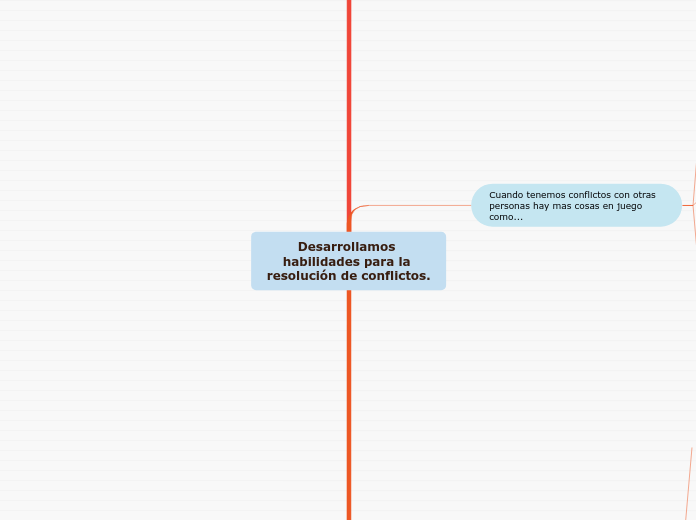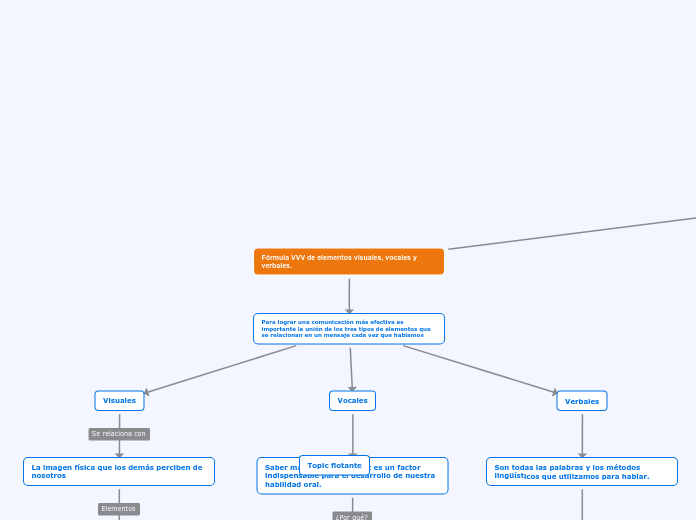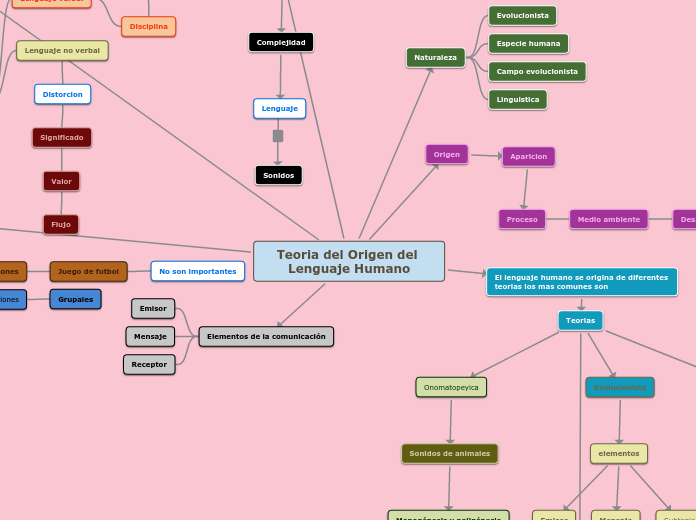Desarrollamos habilidades para la resolución de conflictos.
To name your story, you have to think about the overall message and what you want your audience to understand from the story. Also, make it relevant and easy to remember.
Entendiendo La Resolución de Conflictos
The ending of a story is essential. We all know that if the ending is weak, what happened before loses its importance. So make it unpredictable, but fair. A resolved ending answers all the questions and ties up any loose threads from the plot.
Sea Optimista
Estar de acuerdo en participar en el manejo o resolución de conflictos es un acto de valentía y esperanza. Al participar, las personas comunican sus creencias para entablar una relación. También depositan su confianza en usted para que usted responda y apoye sus esfuerzos.
Reconozca el Poder
This is the closure section of the story.
See examples of possible outcomes below:
- all problems have been solved
- it's clear how each one of your characters ends up
- your main character is transformed by the challenge
El poder es un factor dominante en la mediación y plantea muchas preguntas: ¿Qué es? ¿Quién lo tiene? ¿Cómo equilibrar el poder? Las suposiciones sobre quién es el “poderoso” son fáciles de hacer y, muchas veces son equivocadas. Las personas que son hábiles en resolución de conflictos reconocen las dinámicas del poder en los conflictos y son conscientes sobre cómo administrarlo auténticamente
Try answering these questions to come up with a closure:
- Have all the problems been solved?
- Is there a clear picture of what happens with each character in the story?
- Has the challenge transformed your main character?
- How do the characters feel in the end?
Comprenda las necesidades de cada uno
This is the moment when the main character surpasses the last obstacle and finally faces their greatest challenge.
The climax usually follows one of these patterns:
- realization
- resolution
- choice
Type in your answer.
Es natural que cuando una persona se ve involucrada en un conflicto trate por todos los medios de resolverlo. Cuando alguien viene a usted por ayuda para resolver un conflicto, usted evalúa la situación, determina los pasos a seguir y procede a actuar hasta que se resuelve el problema
Cuando tenemos conflictos con otras personas hay mas cosas en juego como...
The middle of the story is where you add layers of complications that will lead to the end. Reveal more about the character's journey. Did their personality go through changes? How did they overcome the challenges? And as you build up the story’s central conflict, make it more personal to that character. Also, from the middle act, you have to lead into the final act.
Carácter personal
There wouldn't be any tension and excitement in your story if there weren't any obstacles in your character's way.
El carácter de una persona es la manera en la que esta reacciona habitualmente frente a una situación. ... Por ejemplo, se dice que una persona es generosa, altruista, bondadosa y/o servicial si le gusta servir y ayudar a otros.
A story is nothing more than a character overcoming a series of difficulties to reach the desired goal. Obstacles usually create suspense and conflict. In overcoming obstacles, there is growth: weak becomes strong; hatred turns into love; sadness into happiness; wrong into right; lies into truth; or evil becomes good.
See a few examples below:
- stopping a meteor
- finding a killer
- finding love
Imagen frente a los demás
Your character(s) need(s) motivation in order to solve the challenge(s).
Las personas son muy sensibles a las variaciones en su aspecto físico.
Secondary characters also might have motivs beacuse of which they may cross path with main character or which might trigger them to help the main character.
Es un factor importante en el desarrollo de la personalidad y las relaciones sociales
Secondary characters might also have motives that lead them to cross paths with the main character or which might trigger them to help the main character.
Motivation
La apariencia física es el conjunto de características físicas y estéticas que nos hacen ser percibidos como diferentes los unos de otros.
Why does your character need to confront this challenge? What does he/she expect to accomplish by solving it?
See a few examples:
- will marry in 3 days
- can fix the mistakes of the past
Sentimientos
Each story has a main character and that character usually needs to solve a problem or challenge. The character's challenge is the one that creates tension throughout the story.
Cuando la emoción se procesa en el cerebro y la persona es consciente de dicha emoción y del estado de ánimo que le produce, da lugar al sentimiento, por ello el origen de los sentimientos son las emociones definidas y valoradas racionalmente que determinarán nuestro estado de ánimo.
Type in any other challenges which other characters in the story need to face.
.
Sentimiento se refiere tanto a un estado de ánimo como también a una emoción conceptualizada que determina el estado de ánimo.
habilidades para resolver conflictos
In the beginning of the story (or the exposition), you will need to introduce the setting and characters. You might also want to introduce the main conflict. This part of the story is important because it gives the reader necessary background information and maybe even a first insight into a character’s personality.
Habilidad para comunicarse
Escuchar
capacidad para enviar, recibir, elaborar y emitir información, ideas y opiniones
Auto control
The setting (time & place) of a story can change throughout the plot.
Ejemplos
The time of the story can also change. It can describe the event of a single day or can include an entire year's plot. Anyway, don't forget to mention it.
Demostración de una libertad plena en una personalidad integrada
Tranqulidad
habilidad que permite regular las emociones, pensamientos, comportamientos y deseos de uno mismo










